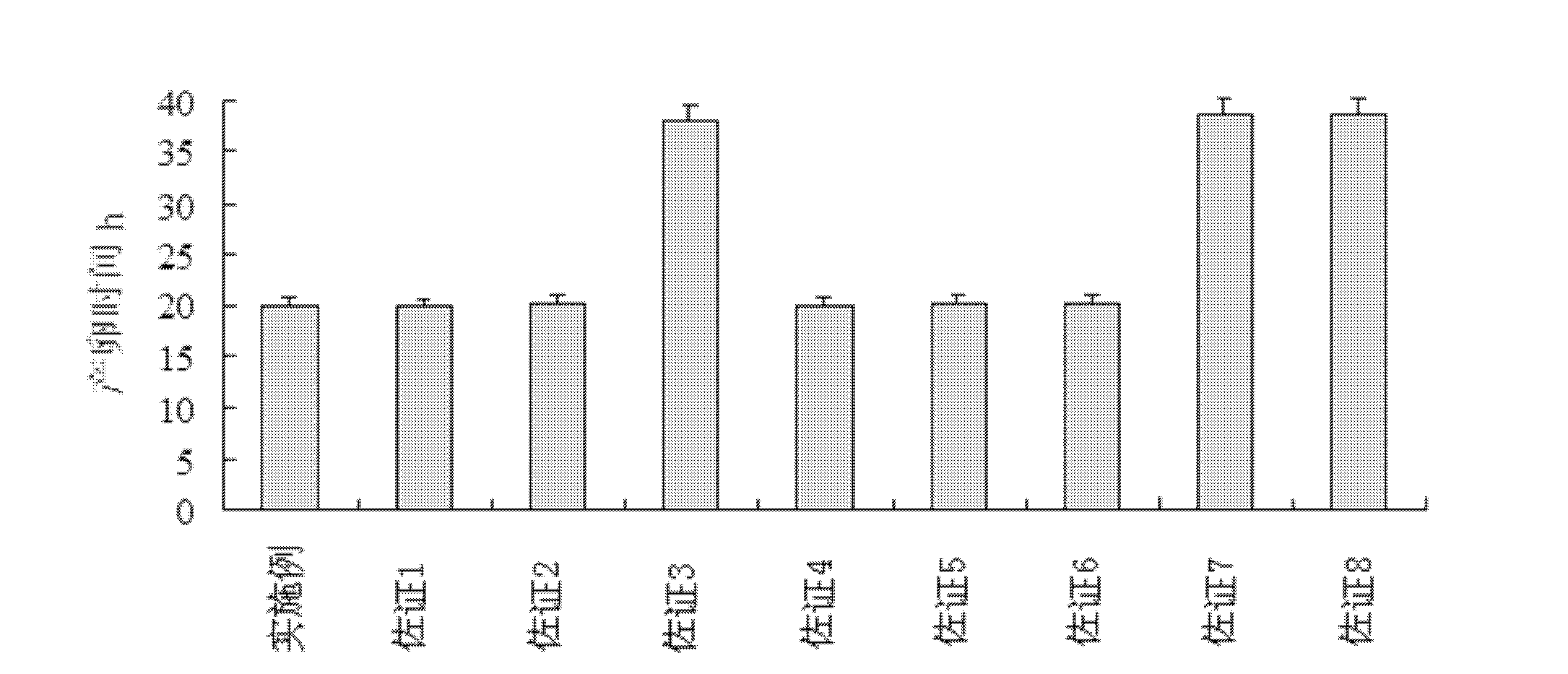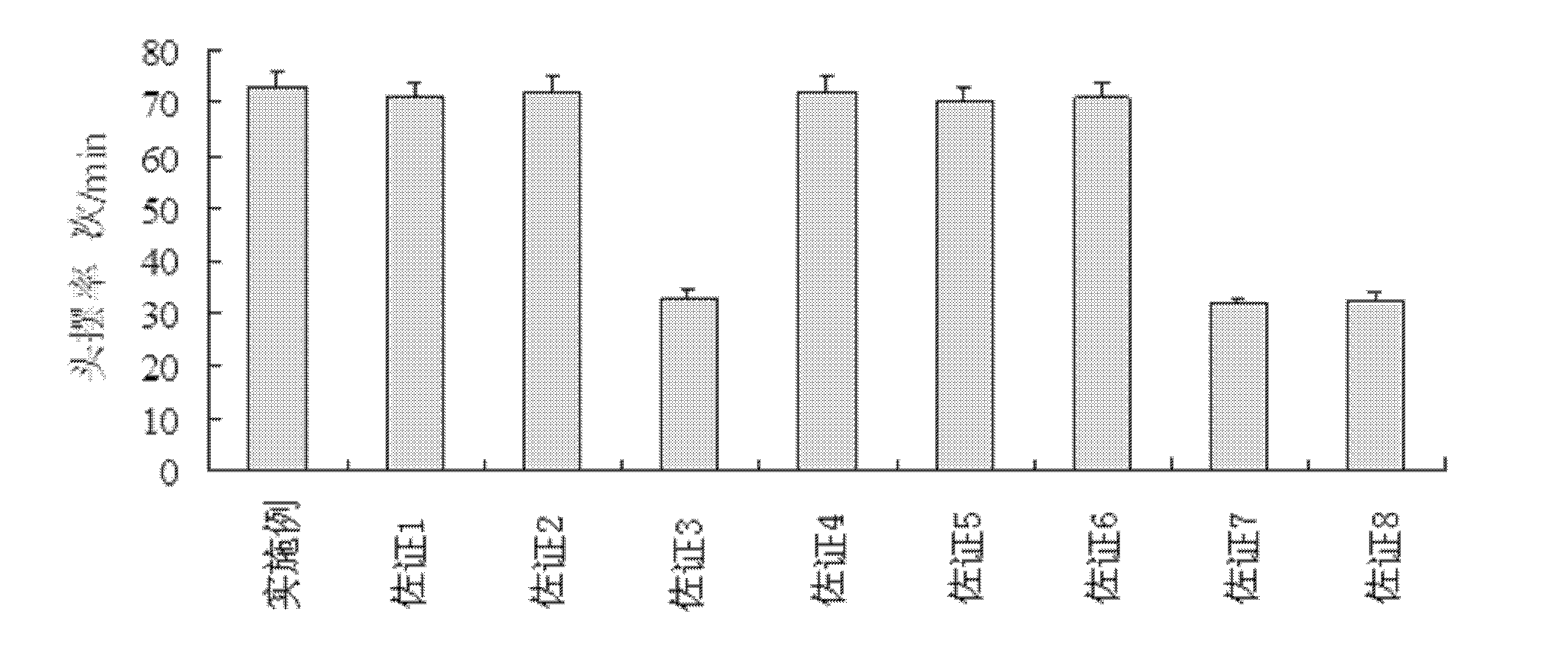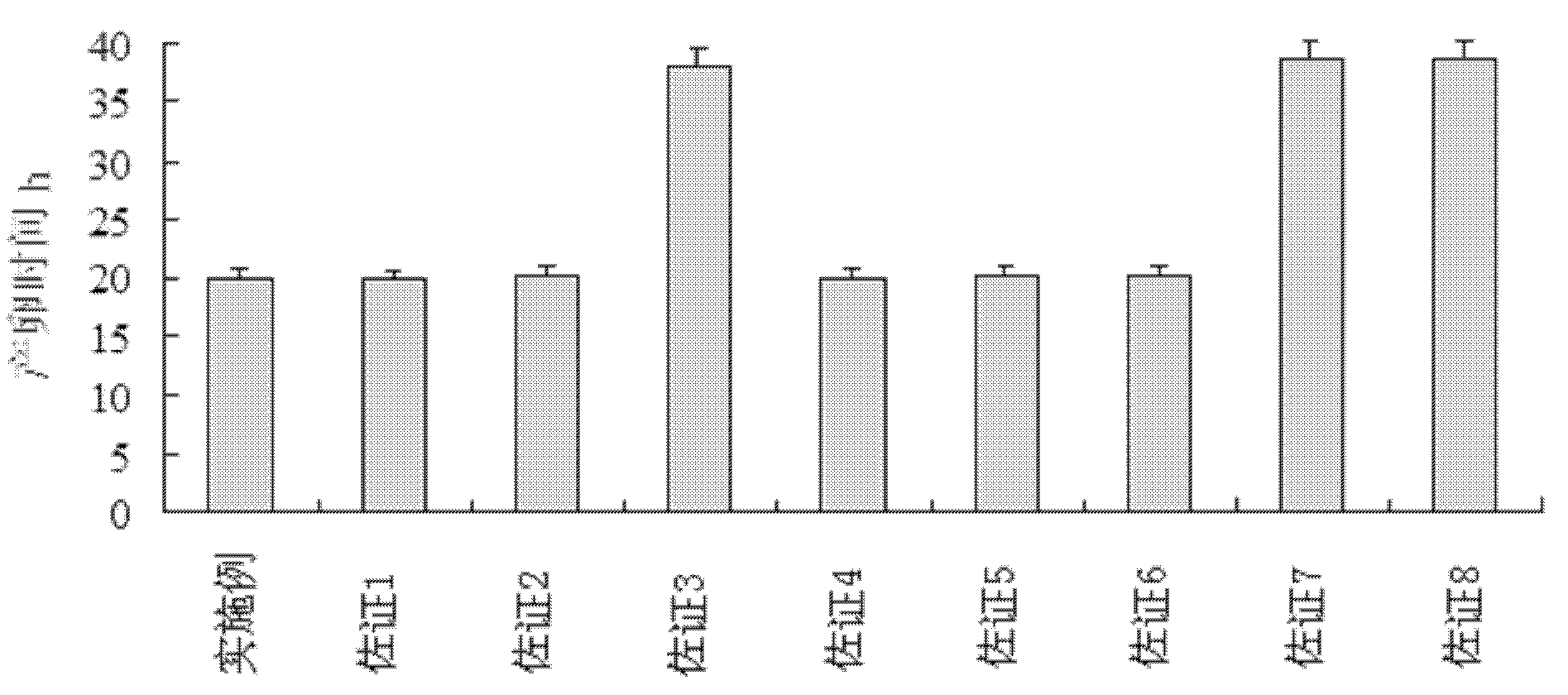Method for identifying swill-cooked dirty oil by using nematodes
A technology for gutter oil and nematodes, which is applied in the field of gutter oil identification, can solve the problems of unrefined gutter oil detection, high instrument dependence, and complicated operation, and achieves the effects of easy training and mastery, low cost, and convenient experimental operation
- Summary
- Abstract
- Description
- Claims
- Application Information
AI Technical Summary
Problems solved by technology
Method used
Image
Examples
specific Embodiment approach 1
[0011] Specific embodiment one: the present embodiment utilizes the method for nematode identification waste oil to realize according to the following steps:
[0012] 1. Mix 17g of agar powder, 2.5g of peptone, and 0.11g of CaCl 2 , 0.12g of MgSO 4 , 3g of NaCl and 25mL of phosphate buffer, add distilled water to make up to 1000ml, then put it into a high-pressure steam sterilizer at 120°C for 20min, then cool down to 50-60°C, and then add 1 ~10ml edible oil to be tested to obtain the culture medium, and then pour it into the petri dish;
[0013] 2. After the medium in the petri dish is solidified for 8-12 hours, 5-10 nematode larvae are inserted for observation. If the larvae grow slowly, they can develop into adults after more than 36 hours and the adults are obviously thin and small, with weakened mobility and motor behavior decline. The edible oil to be tested is not waste oil; if it can develop into adults within 24 hours and the growth and activity are in good conditio...
specific Embodiment approach 2
[0016] Specific embodiment two: the difference between this embodiment and specific embodiment one is the configuration of phosphate buffer in step one: the KH of 13.6g 2 PO 4 and 1.8 g of KOH, distilled water was added to make the volume to 100 mL, and the pH was adjusted to 6.0 to obtain a phosphate buffer. Other steps and parameters are the same as those in Embodiment 1.
specific Embodiment approach 3
[0017] Embodiment 3: The difference between this embodiment and Embodiment 1 or 2 is that in step 1, the temperature is lowered to 55° C., and then 2 ml of edible oil to be tested is added in a sterile environment. Other steps and parameters are the same as those in Embodiment 1 or Embodiment 2.
PUM
 Login to View More
Login to View More Abstract
Description
Claims
Application Information
 Login to View More
Login to View More - R&D
- Intellectual Property
- Life Sciences
- Materials
- Tech Scout
- Unparalleled Data Quality
- Higher Quality Content
- 60% Fewer Hallucinations
Browse by: Latest US Patents, China's latest patents, Technical Efficacy Thesaurus, Application Domain, Technology Topic, Popular Technical Reports.
© 2025 PatSnap. All rights reserved.Legal|Privacy policy|Modern Slavery Act Transparency Statement|Sitemap|About US| Contact US: help@patsnap.com



